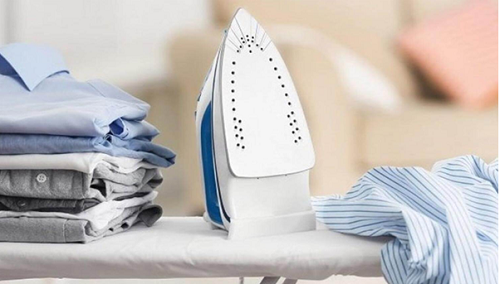Irons provide our clothing with a stylish look! An essential habit in our life is using an iron to smooth out creases and wrinkles in clothing. However, irons must be cleaned and maintained because their soleplates can get clogged with oil, dust, and other substances.
In some circumstances, materials might melt, leaving a dreadful mess that won’t go away. But on the other hand, maintaining your iron will allow it to glide across your dresses, shirts, pants, and more! Who would choose that?
How can a flat iron be cleaned? You’re finally in the correct place to find out! You may learn how to clean the iron from this guide properly.
1. Fill a Hot Iron Soleplate With Tylenol:
Unexpectedly, Tylenol is one of the best tricks for cleaning an iron with burnt material. Any acetaminophen tablet will do; it doesn’t need to be a name brand.
Set the iron to the highest temperature. When the pill is hot, apply it directly to the burned area. The pill will dissolve and transform into a gel to remove the burned area. The soleplate should be cleaned with a wet cloth or paper towel. Repeat as necessary to get all of the char away.
As per ironing services, wear oven mitts or heat-resistant gloves to safeguard your fingertips when using this technique. Avoid using pliers or tweezers to grasp the pill; one slip and you’ll scratch the iron, and there’s no going back. You should be fine so long as you have something on that covers your hands.
2. Prepare a Baking Soda Iron Cleaning Paste
Everything from stoves to dishwashers can be cleaned with baking soda, a miracle cleaner. Additionally, it tends your iron. You can make a stain-removing paste with two tablespoons of baking soda and one tablespoon of water.
Rub it gently on the iron plate, avoiding getting baking soda in the steam holes. The next wash and iron service advice is to be careful to clean the steam holes if you do manage to get paste in them.
3. Clean The Steam Holes With a Cotton Swab
Cotton swabs are the ideal tool to wipe out steam holes completely. But, according to ironing services, dip them in distilled white vinegar to enhance their capacity to battle filth before inserting them.
4. Vinegar-soak a Towel
The edges of the iron plate can also be cleaned with vinegar by soaking a towel in the solution, then setting the iron on the towel with the iron plate facing down. Then, 30 minutes later, wipe it down after letting it sit. Just like new! If your iron is rusted, this procedure is incredibly beneficial.
Do you want a high-quality ironing solution for your clothes? Hire Hello Laundry for professionalironing service in London.
5. Use an Ice Cube and a Plastic Knife
You’ll have a little mess to clean up if your iron accidentally touches something made of plastic, but it’s easy to remove. Remove the plug from your iron as soon as it touches the plastic, and let it cool. To fast-harden, put ice cubes in a metal bowl or pan and set the iron plate on top. Now remove the plastic using a plastic knife and clean the area with vinegar spray or a moist rag. Before using the iron again, remove all plastic because it will melt into your clothing.
6. Iron Over Salt And a Newspaper
Salt and newspaper, it’s true, can also do the trick. First, a newspaper should spread out on your ironing board while your iron is set to the highest temperature. Then, the newspaper should be liberally salted before being ironed in circular motions until it is clean. Use a brown paper bag instead of a newspaper if you don’t have one; it will still work.
7. Break Out a Brillo Pad
If your iron has stuck-on glue from a craft project, like adhering to a patch, a Brillo pad can effectively eliminate all the remnants without scratching your iron plate.
Conclusion:
You might be motivated to use paper clips or other sharp objects to clean an iron, but please resist the urge! You run the risk of damaging your iron’s steam holes and soleplates by doing this. Additionally, your interest in learning how to clean a flat iron can lead to your looking for methods of removing its scratches!





























